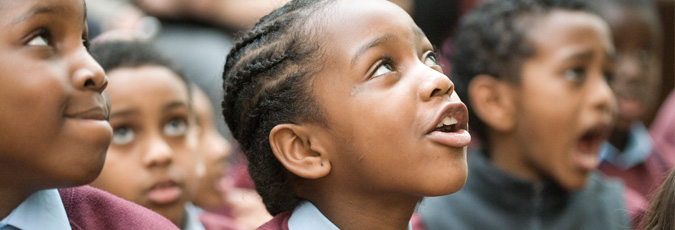Developing responses
Responding to paintings happens instantaneously. Yet an immediate reaction develops into a fuller personal response through further looking and exploration.
Responding is about making connections. These connections are numerous – for example, linking objects or gestures with meanings. Some will be shared by the group, while others that relate to personal experience and memory, will be personal.
Developing responses could be seen in two ways. Exploring a book – fiction or non-fiction – involves consideration of what is written as well as how it is written: i.e. the subject and the authorial technique. In this way, the reader and the writer are brought closer together. So, too, the children learn to read as a writer and write as a reader.
With painting, one considers what is depicted as well as how the artist has used, for example, composition, colour and tone to achieve this. In this way, the viewer and the artist are brought together and the children learn to see as an artist and draw or paint as a viewer.
There are many different ways of developing pupils' responses. Here are a few things to consider, followed by some suggestions for questions.
Planning key questions
In most cases, you are working towards a particular outcome and have specific knowledge, skills and understanding you want the children to learn in the process. The thoughtful planning of key questions helps to achieve this successfully in a way that is investigative and enables genuine enquiry and exploration.
Key questions are:
- Open, so prompt more than one correct answer
- Facilitate a discussion of depth
- Enable the next phase of discussion in a developing dialogue
- Begin with 'Tell me about…' 'What might…?' 'What if…?' 'What do you think are…?' rather than 'Who?' 'When?' 'Where?' which suggest that there is one, correct answer. Note the use of 'might' rather than 'is' and 'What do you think are…?' rather than 'What are…?'
Progression
As one spends longer with a painting, initial dialogue progresses from that which relies on observation and making simple inferences – using the senses, for instance – through to the 'bigger' questions that require higher-order thinking skills such as synthesis and evaluation. So, too, children are required to think both critically (processing and interpreting information) and creatively (considering new possibilities).
The place of knowledge
You do not need to know everything about a painting to enable others to read and respond to it. Indeed, you never can. However, having some knowledge is important. A few thoughts on the place of knowledge in developing dialogue might be:
- Avoiding telling for the sake of it
- Judging when to drop in information so that it enables the children to make further connections
- Spending more time on questions that require thinking rather than those that require recalling knowledge
Keeping it real
For children to take ownership of the painting, they need to metaphorically inhabit it. We enable this to happen when we provide opportunities to empathise with the characters through drama and role play.
For example, you could ask pupils to re-enact a scene, freeze-framing certain episodes within (and beyond) what is shown in the painting. You could bring certain episodes to life through role play, where the children are able to experience and imagine how the characters feel physically and emotionally.
Next: How to ignite discussion

